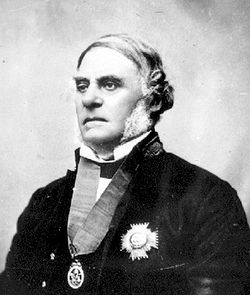Douglas Treaty

|
|
| Drafted | 1850-1854 |
|---|---|
| Location | Colony of Vancouver Island |
| Parties | First Nations of Vancouver Island and the Colony of Vancouver Island |
| Language | English |
The Douglas Treaties, also known as the Vancouver Island Treaties or the Fort Victoria Treaties, were a series of treaties signed between certain indigenous groups on Vancouver Island and the Colony of Vancouver Island.
With the signing of the Oregon Treaty in 1846, the Hudson's Bay Company (HBC) determined that its trapping rights in the Oregon Territory were tenuous. Thus in 1849, it moved its western headquarters from Fort Vancouver on the Columbia River (present day Vancouver, Washington) to Fort Victoria. Fort Vancouver's Chief Factor, James Douglas, was relocated to the young trading post to oversee the Company's operations west of the Rockies.
This development prompted the British colonial office to designate the territory a crown colony on January 13, 1849. The new colony, Colony of Vancouver Island, was immediately leased to the HBC for a ten-year period, and Douglas was charged with encouraging British settlement. Richard Blanshard was named the colony's governor. Blanshard discovered that the hold of the HBC over the affairs of the new colony was all but absolute, and that it was Douglas who held all practical authority in the territory. There was no civil service, no police, no militia, and virtually every British colonist was an employee of the HBC.
As the colony expanded the HBC started buying up lands for colonial settlement and industry from Aboriginal peoples on Vancouver Island. For four years the governor, James Douglas, made a series of fourteen land purchases from Aboriginal peoples.
...
Wikipedia
